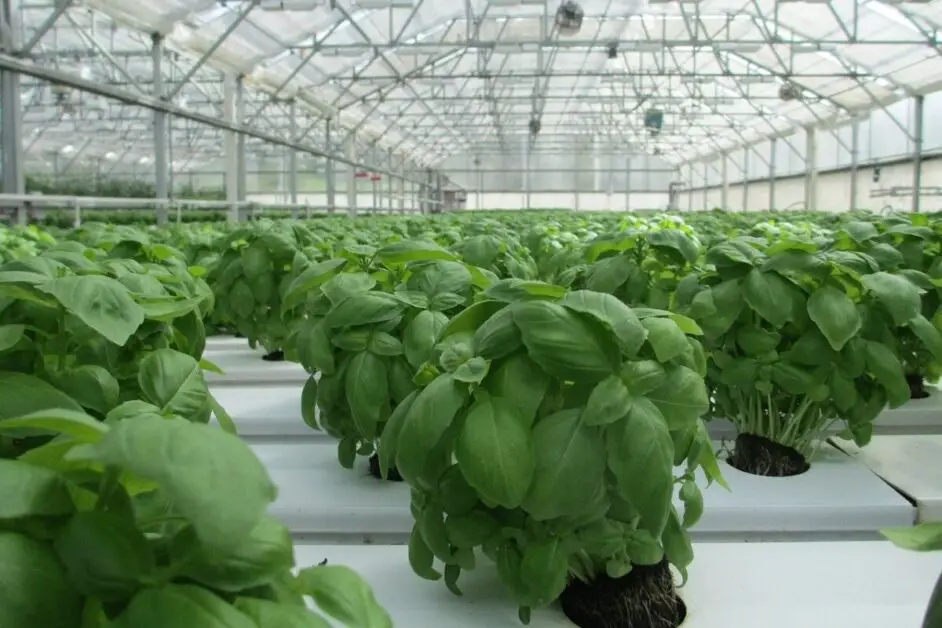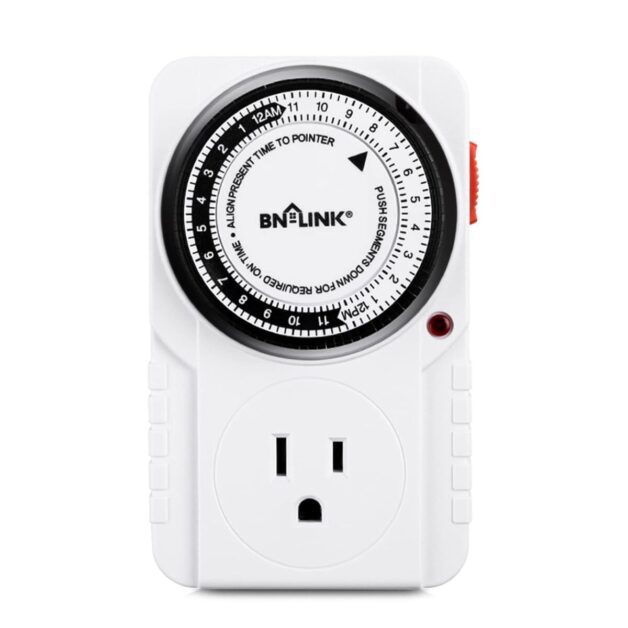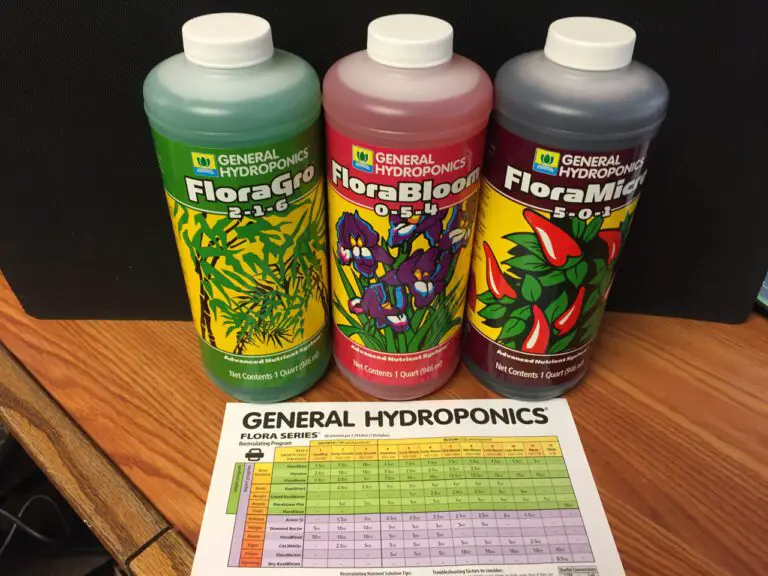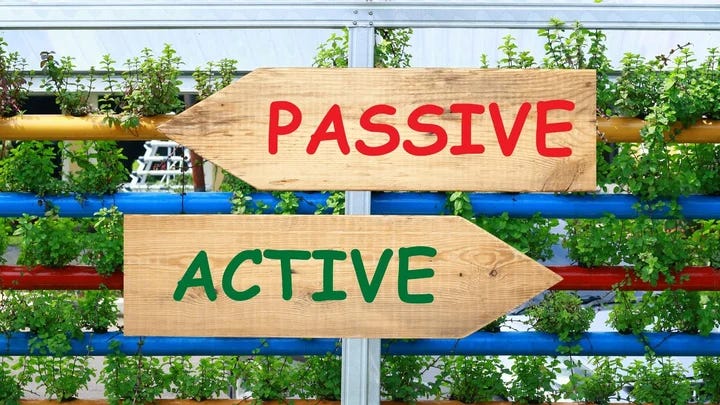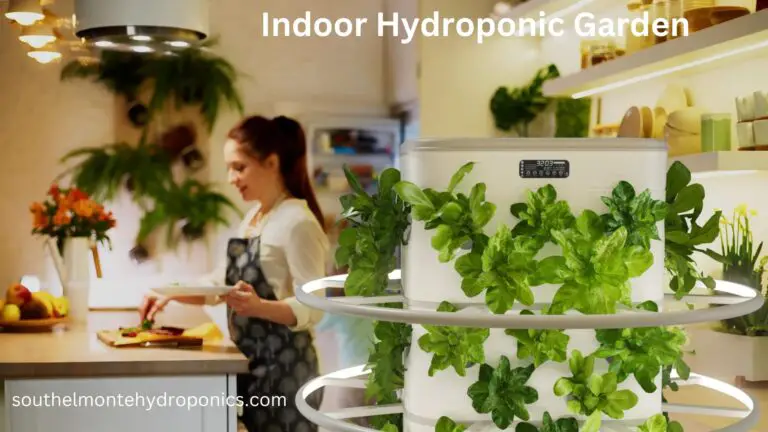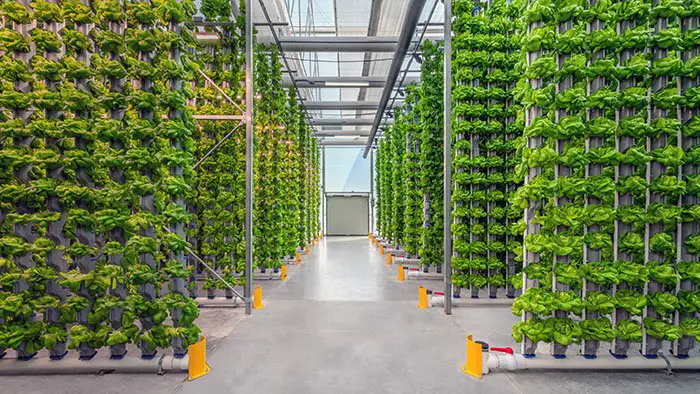How to Grow Fresh and Fragrant Hydroponics Basil
“Did you know that you can have fresh, aromatic basil right at your fingertips, no matter the season or space constraints? Welcome to the world of hydroponic basil growing, where gardening meets innovation. In this guide, we’ll delve into the art and science of cultivating basil hydroponically, perfect for urban dwellers or anyone craving garden-fresh flavor year-round. From setup tips to nurturing techniques, we’ve got you covered. With our expert insights and step-by-step instructions, you’ll soon be harvesting bountiful basil that’s bursting with flavor and fragrance. Say goodbye to store-bought bundles and hello to your very own basil oasis. Let’s dive in and unlock the secrets to growing your own hydroponic basil!”
Table of Contents
Understanding the Basics of Hydroponics
Hydroponics is a unique and innovative method of growing plants without the use of soil. Instead, plants are grown in a nutrient-rich water solution, allowing for more efficient nutrient absorption and overall plant health. This technique has gained popularity among gardening enthusiasts for its numerous benefits and the ability to grow plants in various settings, including indoor spaces.
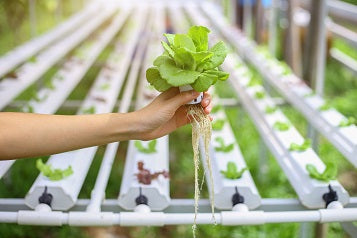
- Water Conservation: Hydroponics conserves water by utilizing a recirculating system, which allows for the reuse of water. Unlike traditional gardening methods, where water saturates the soil and can lead to wastage through runoff, hydroponics minimizes water waste by providing a stable environment for plant growth.
- Precise Nutrient Delivery: Hydroponics offers precise control over nutrient delivery by directly providing essential minerals to the roots through the water solution. This controlled delivery system ensures that plants receive an optimal balance of nutrients, promoting faster growth and higher yields. It also reduces the risk of nutrient deficiencies or toxicities that may occur with soil-based gardening.
- Efficiency and Sustainability: Understanding the basics of hydroponics is crucial for gardening enthusiasts interested in exploring this innovative growing method. By harnessing the power of precision nutrient delivery and water conservation, hydroponics opens up new possibilities for growing plants efficiently and sustainably.
- Exploration of Various Aspects: In further discussions, we will delve into selecting the right plants, creating an ideal hydroponic system, maintaining proper conditions, and troubleshooting common issues. These insights are aimed at helping you achieve successful hydroponic gardening and maximize your yields.
Selecting the Right Basil Variety for Hydroponics
When it comes to selecting the right basil variety for hydroponics, there are a few key factors to consider. First and foremost, you’ll want to choose a variety that is well-suited for indoor cultivation. Since hydroponic systems provide controlled environments, it’s important to select a basil variety that thrives in these conditions.

- Genovese Basil: Known for its strong aroma and robust flavor, Genovese basil is a popular choice for hydroponic gardening, especially in Italian cuisine.
- Thai Basil: Adding a unique and spicy twist to culinary creations, Thai basil is another excellent option for hydroponic basil growers.
- Lemon Basil: With refreshing citrus notes, lemon basil is favored by many hydroponic basil enthusiasts for its distinct flavor profile.
- Consider Growth Characteristics: When selecting a basil variety for your hydroponic system, consider growth characteristics. Compact varieties like bush basil are suitable for systems with limited vertical space, while taller varieties like sweet basil thrive in environments with ample room for growth.
- Personal Preferences and Culinary Needs: Ultimately, the best basil variety for your hydroponic system depends on your personal preferences and culinary requirements. By choosing a variety that aligns with these factors, you’ll increase your chances of success and enjoy a plentiful harvest of fresh, flavorful basil.
Creating the Perfect Hydroponic System for Basil
Creating the perfect hydroponic system for basil requires careful planning and attention to detail. The first step is to select the type of hydroponic system that best suits your needs and space availability. There are several options to choose from, such as deep water culture, nutrient film technique, and drip irrigation systems.

Stay tuned to the next section to find out more about choosing the right growing medium for hydroponic basil and how to plant seedlings in the system. With the right system and growing conditions in place, you are well on your way to cultivating healthy and vibrant basil in your hydroponic setup.
Setting Up the Hydroponic System
To set up a hydroponic system for growing basil, there are a few important steps to follow.
- Choose the Right System: Evaluate available space and desired yield to select the appropriate size and type of hydroponic system. Options include vertical towers, nutrient film technique (NFT) systems, and ebb and flow systems, each with unique advantages and considerations.
- Assemble Equipment and Materials: Gather trays or containers for plant placement, a water reservoir, a pump and tubing for nutrient delivery, an air pump for oxygenation, and grow lights if natural sunlight is insufficient. Ensure all components are clean and functional before assembly.
- Set Up the System: Begin by arranging the water reservoir and connecting the pump and tubing for nutrient delivery. Position trays or containers in a location with adequate light and airflow, considering vertical arrangements for space efficiency. Fill trays with chosen growing medium and evenly space seedlings or young plants.
- Ensure Proper Oxygenation: Connect the air pump to provide essential oxygen to the roots, promoting healthy growth and nutrient absorption.
Setting up the hydroponic system requires careful planning and attention to detail. By selecting the right system and equipment, and following proper assembly techniques, you will be well on your way to successfully growing basil hydroponically.
The VIVOSUN 317GPH Air Pump has been a reliable addition to my hydroponic system, providing consistent and efficient airflow to my plants’ roots. Its powerful performance ensures that oxygen is distributed evenly throughout the nutrient solution, promoting healthy root development and enhancing overall plant growth. I’ve noticed a significant improvement in the vitality of my plants since incorporating this air pump into my setup.
One aspect I appreciate about this air pump is its quiet operation, which minimizes disruptions in my indoor gardening space. Despite its powerful performance, the pump emits minimal noise, allowing me to enjoy a peaceful environment while tending to my plants.
Additionally, the compact design of the pump makes it easy to integrate into my hydroponic system without taking up too much space, which is particularly beneficial for smaller setups or limited gardening areas. Overall, the VIVOSUN 317GPH Air Pump has exceeded my expectations and proven to be a valuable investment in maintaining optimal conditions for my hydroponic plants.
- Powerful Performance: The VIVOSUN 317GPH Air Pump delivers efficient and consistent airflow, ensuring adequate oxygenation for aquatic environments and hydroponic systems.
- Versatile Use: This air pump is suitable for both aquariums and hydroponic setups, providing flexibility for various applications.
- Quiet Operation: With low noise levels, this air pump operates discreetly, minimizing disruptions in the surrounding environment.
- Energy Efficient: Designed to consume minimal power, the VIVOSUN air pump helps conserve energy, resulting in cost savings over time.
- Durable Construction: Constructed with high-quality materials, including durable plastic and rubber components, this air pump is built to withstand long-term use.
- Easy to Install: The pump comes with easy-to-follow instructions, making installation quick and hassle-free, even for beginners.
- Compact Design: Its compact size allows for convenient placement in tight spaces, ideal for smaller aquariums or hydroponic setups.
- Limited Airflow Control: Some users may find that the airflow control options are limited, making it challenging to adjust airflow levels precisely.
- Vibrations: Despite its quiet operation, the pump may produce slight vibrations, which could potentially disturb sensitive aquatic organisms or plants.
- External Airline Required: The pump requires an external airline tubing (not included) for connection, which may incur additional costs for users who do not already have compatible tubing.
- Limited Warranty: The product warranty may be limited in duration or coverage, which could pose a risk in case of malfunctions or defects after the warranty period expires.
- Not Submersible: This air pump is not designed to be submerged in water, limiting its placement options and requiring careful consideration during setup.
- Noisy Over Time: Some users have reported that the pump may become noisier over time with prolonged use, potentially affecting its long-term performance and user satisfaction.
Providing the Ideal Growing Conditions for Basil
Basil, a popular herb in various cuisines, thrives in specific growing conditions to ensure optimum growth and flavor. When cultivating basil in a hydroponic system, providing the ideal growing conditions is even more crucial, as it relies solely on nutrient-rich water instead of soil.
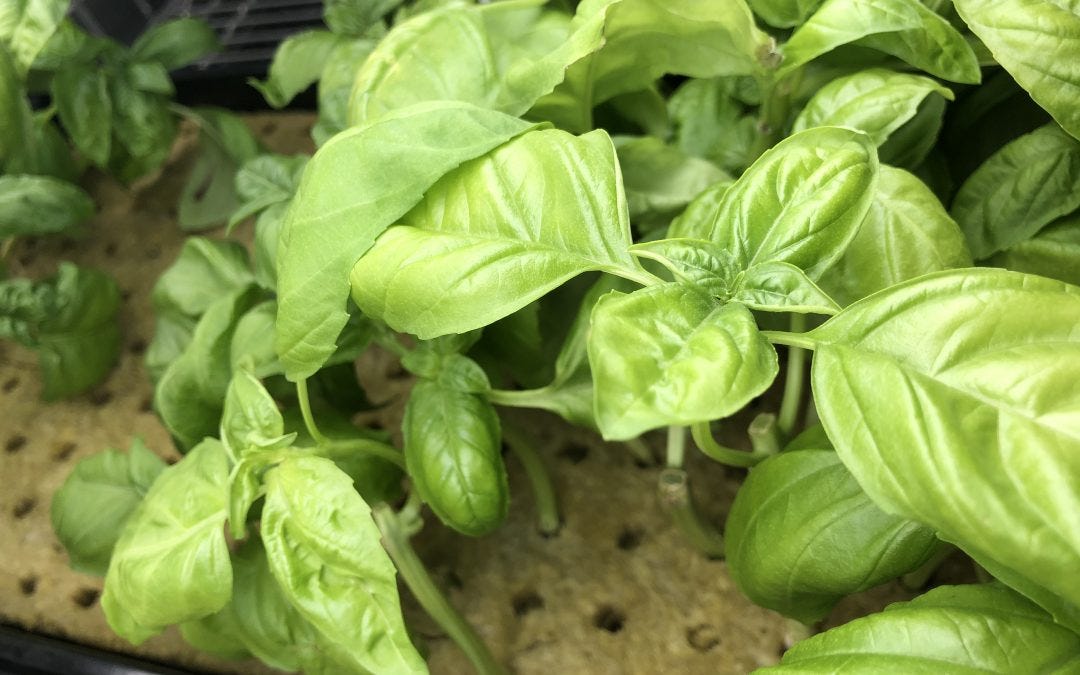
- Temperature:
- Ideal Range: Maintain temperatures between 70°F and 85°F (21°C and 29°C).
- Avoid Extreme Conditions:
- Too Cold: Temperatures below 50°F (10°C) can lead to stunted growth or plant death.
- Too Hot: Extreme heat above 95°F (35°C) may cause bolting and affect flavor and quality.
- Humidity:
- Preferred Level: Basil thrives at 40-60% humidity.
- High Humidity: Increases the risk of fungal diseases.
- Low Humidity: Can lead to stressed plants and leaf curl.
- Methods: Consider using a humidifier or misting system to maintain suitable humidity.
Remember these points to create an optimal environment for your hydroponic basil! 🌿🌱
Choosing the Right Growing Medium for Hydroponic Basil
When it comes to hydroponic basil cultivation, choosing the right growing medium is crucial for optimal plant growth and development. The growing medium serves as a substitute for soil in hydroponics, providing support to the plants’ root systems and delivering essential nutrients and water. There are several factors to consider when selecting a suitable growing medium for hydroponic basil.
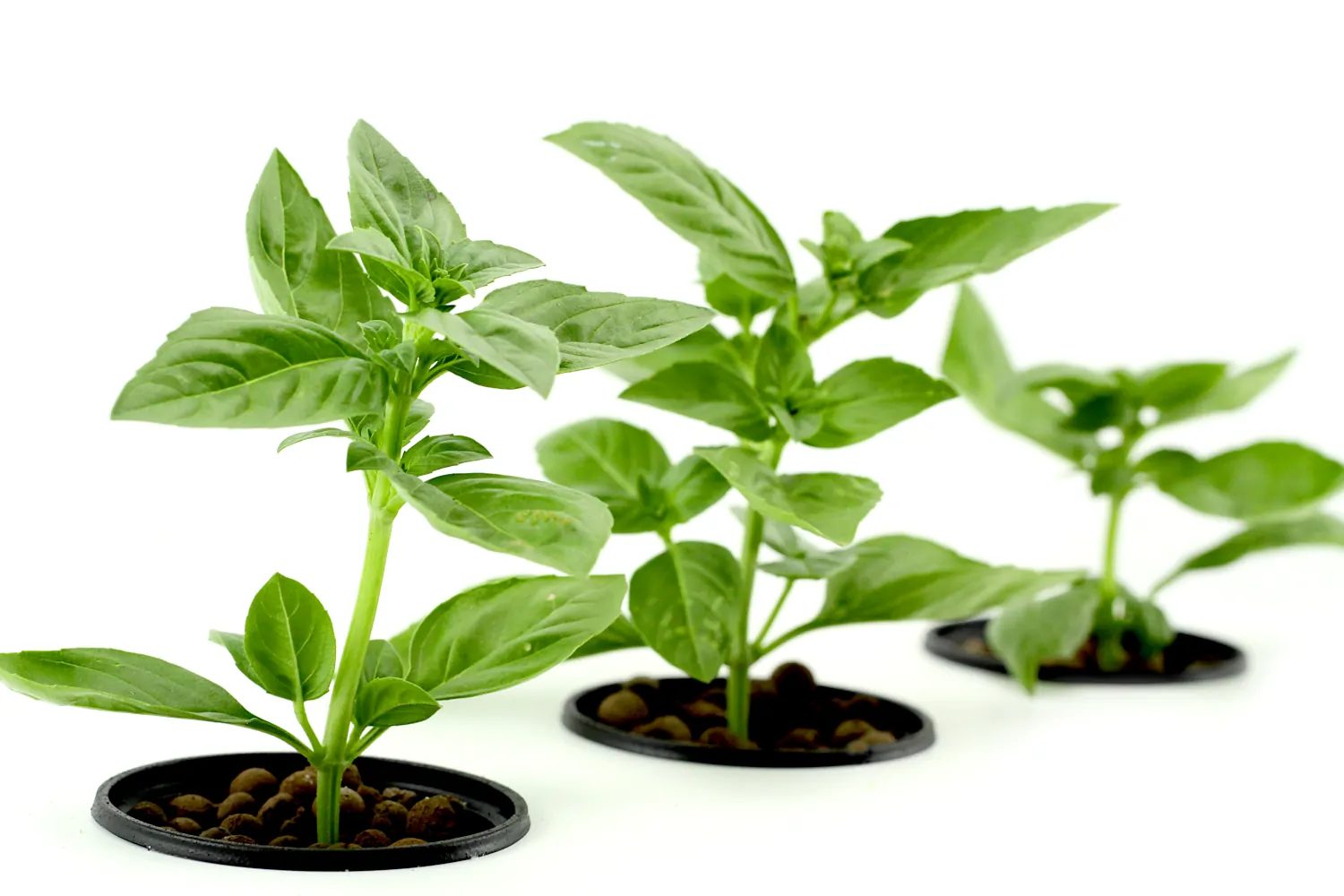
rockwool
One commonly used option is rockwool, a lightweight and porous material made from melted rock and spun into fibers. Rockwool has excellent water retention capabilities while still allowing for adequate oxygenation of the roots. Its pH neutrality makes it an ideal choice for hydroponic systems.
Coconut coir
Another popular choice is coconut coir, which is derived from the husk of coconut fibers. Coconut coir offers good water retention and aeration properties, promoting healthy root growth. Additionally, it is an organic and sustainable option, making it appealing for eco-conscious gardeners.
Overall, the choice of a growing medium for hydroponic basil primarily depends on factors such as availability, cost, water retention capacity, and physical properties. It is recommended to experiment with different mediums and observe the plants’ response to determine the most suitable option for your hydroponic system. With the right growing medium, you can provide a solid foundation for your basil plants to thrive and flourish in a hydroponic setup.
Planting Basil Seedlings in the Hydroponic System
Planting basil seedlings in a hydroponic system is a crucial step towards a successful harvest. Before transplanting your seedlings, ensure that the roots are well-developed and the plants are healthy. Gently remove the seedlings from their nursery containers, being careful not to damage the delicate roots.
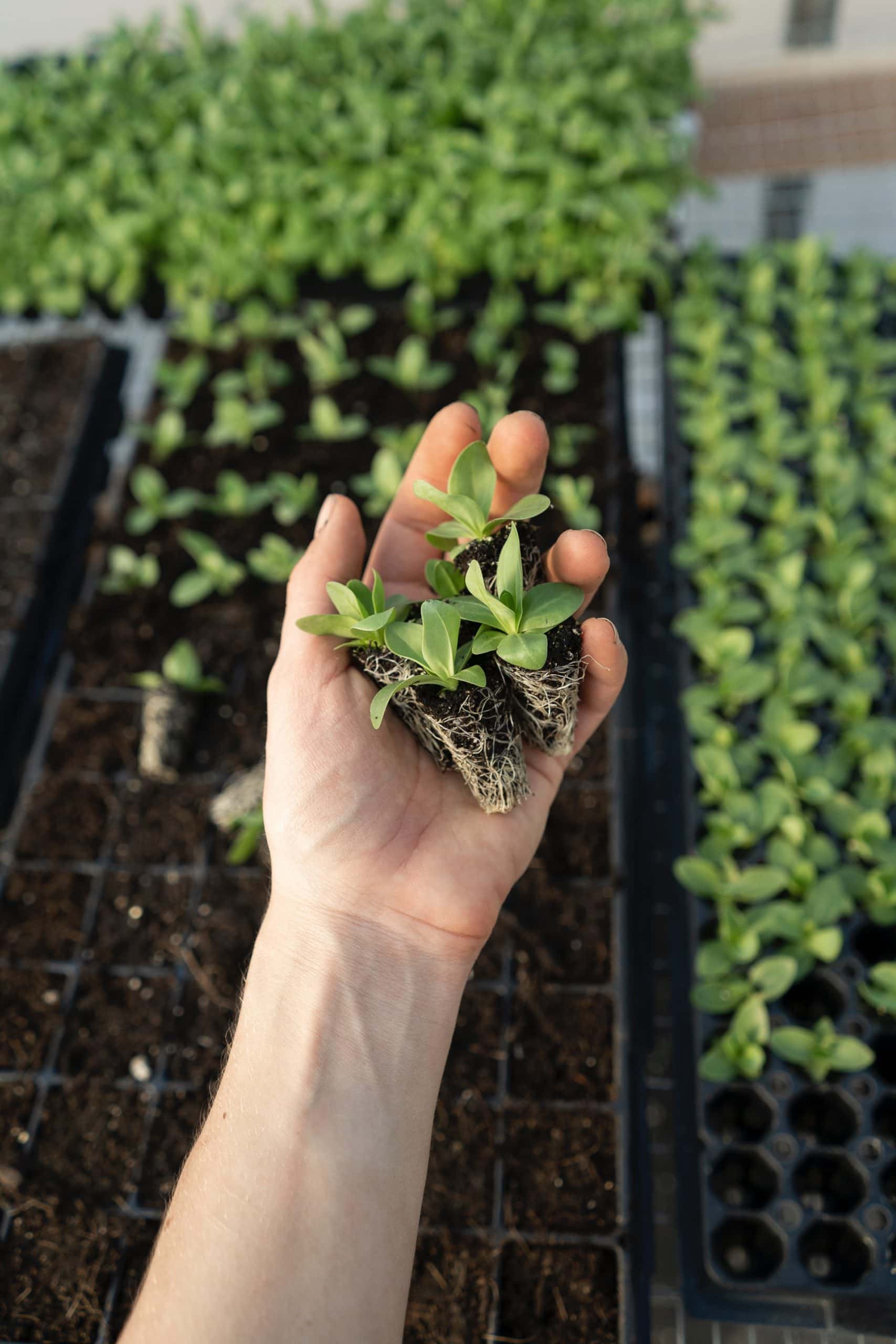
- Prepare Your Hydroponic System:
- Choose a suitable hydroponic method (e.g., floating raft, nutrient film technique, etc.).
- Ensure your system is clean and free from debris or pests.
- Transplanting Basil Seedlings:
- Carefully place the basil seedlings into designated holes or growing media.
- Surround the roots with the growing medium to secure the plants upright.
- Provide Optimal Conditions:
- Lighting: Basil requires adequate light. Use grow lights or natural sunlight.
- Temperature: Maintain temperatures between 70°F and 85°F (21°C and 29°C).
- Humidity: Aim for 40-60% humidity.
- Nutrient Solution: Monitor and adjust nutrient levels as needed.
- pH Level: Regularly check water pH (ideal range: 5.5 to 6.5).
- Watering: Water basil seedlings adequately, avoiding overwatering to prevent root rot.
By following these planting techniques and providing the necessary care, you set the foundation for successful hydroponic basil growth. As the seedlings take root and flourish in the hydroponic system, they will soon become vigorous and productive plants ready for abundant harvest.
Providing Adequate Lighting for Hydroponic Basil
When it comes to hydroponic basil cultivation, providing adequate lighting is absolutely crucial for a successful and abundant harvest. Basil plants have a high requirement for light, as they typically thrive in full sunlight in traditional garden settings. In a hydroponic system, replicating these optimal lighting conditions is essential to ensure healthy growth and optimal yields.
In conclusion, providing adequate lighting for hydroponic basil is crucial for successful cultivation. LED grow lights are highly recommended due to their energy efficiency and ability to provide the right light spectrum. Implementing a consistent lighting duration and maintaining the appropriate distance between the plants and the lights will ensure healthy growth and bountiful yields. By optimizing the lighting conditions, you can enjoy the aromatic and flavorful benefits of fresh hydroponic basil all year round.
The Century 24-hour Mechanical Timer has been an essential tool in my hydroponic gardening setup. Its straightforward design and easy-to-use interface make scheduling tasks like lighting and watering a breeze. I appreciate its versatility, allowing me to automate various aspects of my system without any hassle.
However, I’ve noticed that the timer’s programming options are somewhat limited compared to digital alternatives. While it covers basic scheduling needs, it lacks advanced features like multiple on/off settings per day, which could be beneficial for more complex setups. Additionally, the audible ticking noise it produces can be a bit distracting, especially in quiet environments. Despite these minor drawbacks, its durable construction and reliable performance make it a dependable choice for anyone looking to streamline their hydroponic gardening routine.
✅ Easy to Use: Featuring a simple plug-and-play design, this timer is user-friendly and requires no complex installation or programming. Its intuitive dial design enables quick and hassle-free setup, making it suitable for beginners and experienced growers alike.
✅ Durable Construction: Constructed with high-quality materials, including a grounded outlet and heavy-duty housing, this timer is built to withstand the rigors of daily use in indoor gardening environments. Its sturdy construction ensures long-lasting reliability and performance.
❌ Manual Adjustment Required: Unlike digital timers that can be programmed remotely or adjusted electronically, this mechanical timer requires manual adjustments to set the desired on/off times. This may be inconvenient for users who prefer the convenience of digital controls or need precise timing accuracy for their hydroponic system.
❌ Audible Ticking Noise: Some users may find the audible ticking noise produced by the mechanical timer to be bothersome, especially if it is placed in close proximity to living areas or sleeping quarters. However, this noise is a common characteristic of mechanical timers and is typically not overly disruptive in most indoor gardening setups.
Maintaining Proper Nutrient Levels in the Hydroponic Solution
Maintaining proper nutrient levels in the hydroponic solution is crucial to ensure the healthy growth and development of basil plants. As we know, hydroponics is a soil-less gardening method that relies on a nutrient-rich solution to provide all the essential elements needed for plant growth. However, it is important to carefully monitor and adjust the nutrient levels to avoid deficiencies or toxicities that can hinder the plants’ progress.
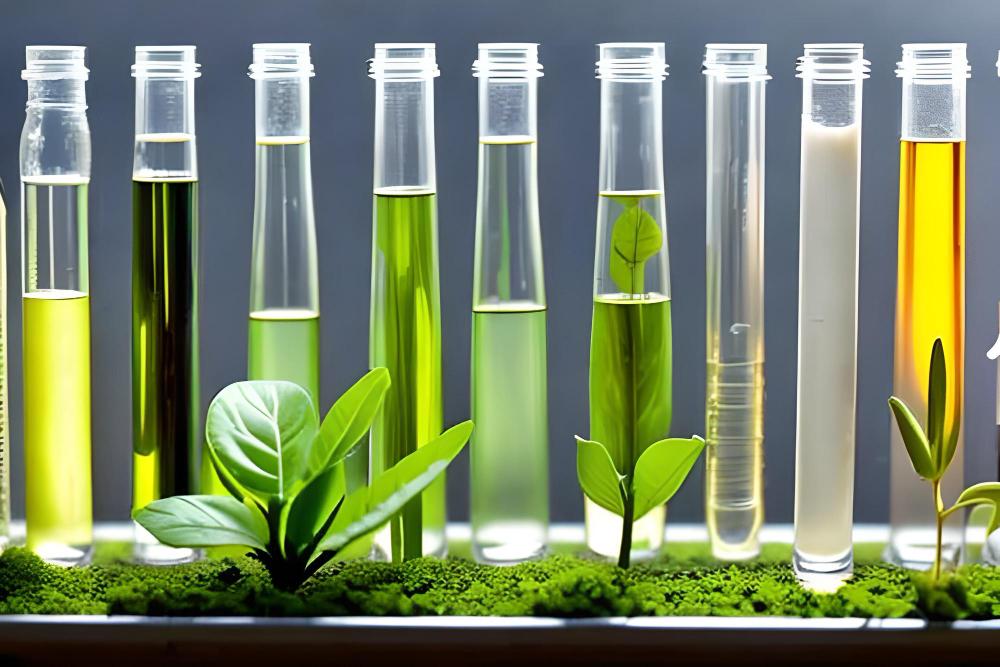
- Regular Testing with pH and EC Meters: Use a pH meter to measure the acidity or alkalinity of the hydroponic solution and an electrical conductivity (EC) meter to determine its nutrient conductivity. Regular testing allows you to track these parameters and make necessary adjustments to maintain optimal nutrient levels.
- Understanding Basil’s Nutrient Requirements: Basil plants require a balanced nutrient solution containing nitrogen (N), phosphorus (P), potassium (K), along with essential micronutrients such as iron (Fe), manganese (Mn), and zinc (Zn) to thrive. These nutrients play crucial roles in various physiological processes, promoting healthy growth and development.
- Commercial or DIY Nutrient Solutions: You can opt for commercially prepared nutrient solutions specifically formulated for hydroponic basil cultivation. Alternatively, you have the option to mix your own nutrient solution using hydroponic nutrient salts, allowing you to customize the nutrient composition based on your basil’s needs and growth stage.
By following the manufacturer’s instructions or the specific nutritional needs of basil, you can ensure that the plants receive the ideal nutrient levels. Regularly monitoring and adjusting the nutrient levels in your hydroponic system will create the optimum conditions for basil plants and contribute to their overall health and productivity.
Monitoring and Adjusting pH Levels in the Hydroponic System
Maintaining the correct pH levels in a hydroponic system is crucial for the successful growth of basil plants. pH measures the acidity or alkalinity of the nutrient solution, and it directly affects the plant’s ability to absorb essential nutrients. Monitoring and adjusting the pH levels on a regular basis is essential to ensure the optimal growth and health of your hydroponic basil.
- Use pH Meter or Testing Kit: Utilize a pH meter or pH testing kit designed for hydroponics to accurately measure the nutrient solution’s pH levels. Test the pH at least once a day, preferably in the morning before nutrient additions, to ensure accurate readings.
- Ideal pH Range: Maintain the pH of the nutrient solution within the range of 5.5 to 6.5 for hydroponic basil cultivation. Straying outside this range can lead to nutrient deficiencies or toxicities, affecting plant health and growth.
- Consequences of pH Imbalance: High pH levels (alkaline) can hinder the uptake of essential elements like iron, manganese, and zinc, while low pH levels (acidic) can lead to the accumulation of toxic elements, both of which can impair plant’s growth..
- Adjustment Methods: Use pH up or pH down solutions, available in hydroponic supply stores, to raise or lower the pH levels as needed. Make gradual adjustments and retest the pH after each addition to avoid sudden and drastic changes that could stress the plants.
Remember to keep a record of your pH readings and adjustments. This will help you identify any patterns or trends in pH fluctuations and allow you to make informed decisions about future adjustments. Regularly monitoring and adjusting the pH levels will go a long way in maintaining a healthy environment for your hydroponic basil plants.
Watering and Feeding Hydroponic Basil
Watering and feeding hydroponic basil is crucial to ensure healthy growth and maximum yield. As a gardener, you need to carefully monitor and maintain the water and nutrient levels in the hydroponic system to provide the ideal conditions for the plants.

By understanding the importance of proper watering and feeding in hydroponic basil cultivation, you can optimize your system to enhance plant health and productivity. With attention to detail and regular monitoring, you can ensure your basil plants receive the ideal conditions they need to thrive.
Watering and Feeding Hydroponic Basil
| Aspect | Recommendations |
|---|---|
| 1. Watering Frequency | – Consistent Moisture: Maintain a consistent moisture level in the growing medium. |
| – Avoid Waterlogging: Ensure proper drainage to prevent waterlogging, which can lead to root issues. | |
| – Monitor Conditions: Adjust watering frequency based on environmental conditions and plant growth stage. | |
| 2. Nutrient Solution | – Balanced Formula: Use a well-balanced hydroponic nutrient solution suitable for herbs like basil. |
| – EC and pH Levels: Regularly monitor and adjust the electrical conductivity (EC) and pH levels of the nutrient solution. | |
| – Follow Manufacturer Recommendations: Adhere to the recommended dosage provided by the nutrient solution manufacturer. | |
| 3. Nutrient Timing | – Continuous Feeding: Basil benefits from continuous or frequent feeding in a hydroponic system. |
| – Avoid Starvation: Prevent nutrient starvation by maintaining consistent nutrient availability. | |
| – Adjust for Growth Phases: Adjust nutrient strength during different growth stages, such as vegetative and flowering phases. | |
| 4. Macronutrients and Micronutrients | – Nitrogen (N): Important for leaf development; maintain an adequate supply during vegetative growth. |
| – Phosphorus (P): Essential for flowering and fruiting; adjust levels during the flowering phase. | |
| – Potassium (K): Supports overall plant health; maintain a balanced supply. | |
| – Calcium (Ca) and Magnesium (Mg): Ensure sufficient levels to prevent deficiencies. | |
| 5. Growing Medium Moisture | – Hydration Control: Maintain optimal moisture levels in the growing medium to support root health. |
| – Avoid Drying Out: Prevent the growing medium from completely drying out between watering cycles. | |
| – Root Health: Ensure a well-aerated environment to promote healthy root growth. | |
| 6. Environmental Conditions | – Temperature: Optimal basil growth occurs in temperatures between 70°F to 85°F (21°C to 29°C). |
| – Humidity: Maintain moderate humidity levels, ideally between 40% to 60%. | |
| – Light: Provide sufficient light, as basil requires at least 6 hours of direct sunlight or artificial light per day. | |
| 7. Monitoring Plant Health | – Leaf Color and Growth: Regularly check for vibrant green leaves and steady growth as indicators of overall plant health. |
| – Inspect for Issues: Monitor for signs of nutrient deficiencies, pests, or diseases; address issues promptly. | |
| – Regular Maintenance: Clean and check the hydroponic system regularly to ensure optimal performance. |
Note: Adjustments to watering and feeding may be necessary based on the specific hydroponic system, basil variety, and environmental conditions. Regular monitoring and responsiveness to the plant’s needs are key for successful hydroponic basil cultivation.
Pruning and Training Basil Plants for Optimal Growth
Basil plants require regular pruning and training to promote optimal growth and ensure a bountiful harvest. Pruning involves removing excess foliage and stems, encouraging the plant to focus its energy on producing more flavorful leaves. It also helps maintain the plant’s shape and prevents overcrowding. When pruning basil, it is important to use clean, sharp shears to prevent the spread of diseases.

- Remove Flower Buds:
- Basil tends to produce flowers as it matures.
- Why Remove?: Allowing flowers diverts energy away from leaf production.
- Action: Pinch off any flower buds to encourage continued leaf growth.
- Regular Pinching:
- Purpose: Promote branching and create a bushier appearance.
- Frequency: Every few weeks throughout the growing season.
- Method: Pinch off the top few inches of stems just above a leaf node.
- Result: New branches will grow from the leaf nodes, leading to a fuller and more productive plant.
- Training Basil Plants:
- Objective: Guide stems to grow in a desired direction.
- Tools: Use stakes or trellises for support.
- Procedure:
- As basil stems lengthen, tie them gently to stakes or trellises using soft plant ties or twine.
- Purpose: Prevent sprawling and optimize space in the hydroponic system.
By implementing proper pruning and training techniques, you can ensure that your hydroponic basil plants grow vigorously and produce an abundance of flavorful leaves.
Preventing and Managing Pests and Diseases in Hydroponic Basil
One of the key challenges in growing hydroponic basil is preventing and managing pests and diseases. While hydroponic systems provide a controlled environment that reduces the risk of infestations and infections, it is still important to remain vigilant and take proactive measures to protect your basil plants
| Pest/Disease | Symptoms | Treatment | Effects on Plant |
|---|---|---|---|
| Spider Mites | – Tiny arachnids (<1 mm) causing webbing on leaves. – Wipe leaves to check for streaks of mite blood. | – Use insecticidal soap or neem oil. – Increase humidity to deter mites. | – Damage to leaves and reduced plant vigor. |
| Thrips | – Metallic black specks on leaves. – Leaves turn brown and dry. | – Introduce beneficial insects (e.g., ladybugs). – Use insecticidal sprays. | – Sucked leaves lead to reduced growth and yellowing. |
| Aphids | – Green, black, or gray insects. – Suck juice from leaves, causing yellowing. | – Spray with soapy water or neem oil. – Introduce natural predators (e.g., lacewings). | – Weakened plants due to sap loss. |
| Whiteflies | – Small, white moth-like insects. – Suck plant sap, causing white spots. | – Use yellow sticky traps. – Apply insecticidal soap. – Encourage natural enemies (e.g., parasitic wasps). | – Reduced plant health and yellowing. |
| Fungus Gnats | – Adult gnats harmless; larvae feed on roots. | – Allow soil to dry between waterings. – Use sticky traps. – Beneficial nematodes for larvae control. | – Slowed growth and potential root damage. |
| Bacterial Leaf Spot | – Black or brown spots on leaves. – Streaking on stems. | – Remove infected leaves. – Improve air circulation. – Avoid splashing soil onto leaves. | – Reduced plant vigor and potential spread to other basil plants. |
Remember to monitor your hydroponic basil plants regularly and take prompt action to prevent or manage these pests and diseases! 🌿🌱
Harvesting Hydroponic Basil at the Right Time
Harvesting hydroponic basil at the right time is crucial to ensure optimal flavor, aroma, and nutrient content. Basil leaves should be harvested when they are fully developed but before they start to flower. This is when the leaves contain the highest concentration of essential oils, which give basil its distinctive taste and fragrance. Obtaining a bountiful harvest also requires careful attention to the plant’s growth stage and overall health.
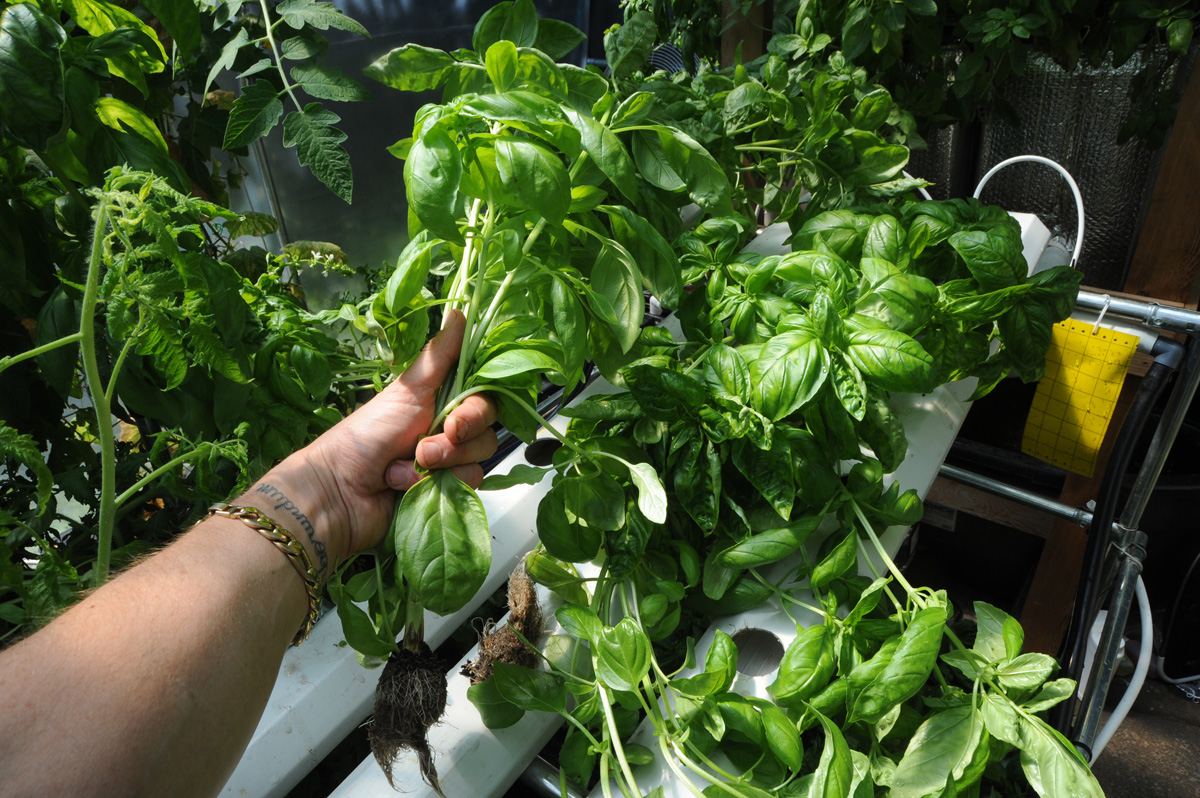
Leaf Color and Size: Mature basil leaves should be vibrant green and have a substantial size (typically around 2 to 3 inches in length).
Yellowing or Wilting: If leaves turn yellow or show signs of wilting, it may indicate stress or nutrient deficiencies.
Tools: Use a sharp, clean pair of scissors or pruning shears.
Method: Cut the basil stem just above a pair of healthy leaves.
Purpose: Encourage lateral branching and stimulate further growth.
Leave Intact: Ensure at least a third of the plant remains intact for continued vitality and future harvests.
Remember these points to enjoy fresh hydroponic basil in your culinary creations! 🌿🌱
Storing and Preserving Hydroponic Basil
When it comes to storing and preserving hydroponic basil, it is important to handle the delicate leaves and stems with care. Basil is known for its delicate flavor and aroma, and proper storage methods will help to maintain these qualities for a longer period of time.
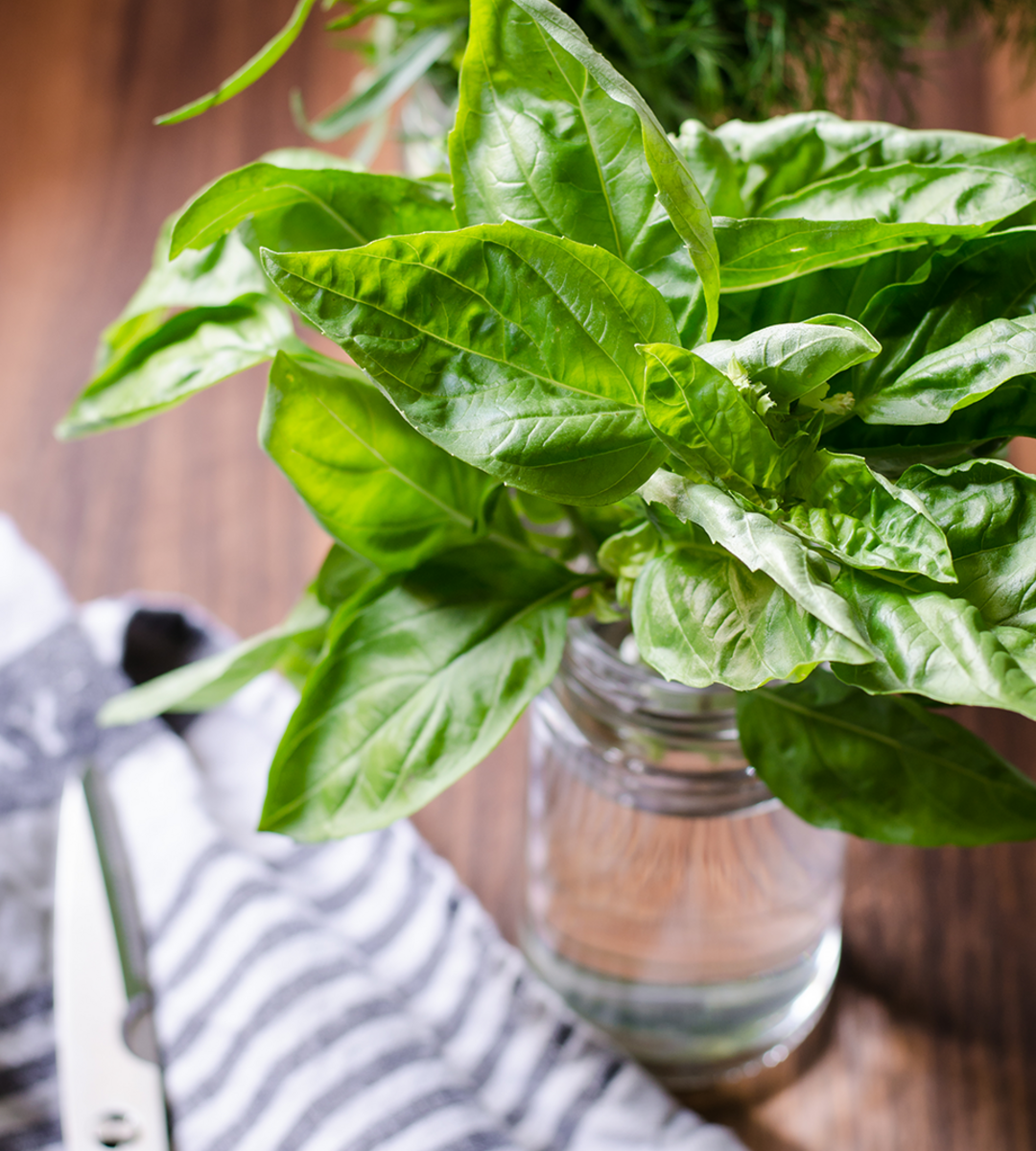
- Avoid Washing Before Storage:
- Why?: Washing basil leaves can lead to wilting and flavor loss.
- Action: Instead, gently brush off dirt or debris with a soft cloth or paper towel.
- Refrigerator Storage:
- Method: Place basil in a plastic bag, removing as much air as possible, and seal it tightly.
- Purpose: Prevent leaves from drying out and maintain flavor.
- Water Storage:
- Method: Store basil in a glass of water (similar to cut flowers).
- Maintenance: Change the water every day or two to prevent bacterial growth.
Remember these points to enjoy fresh hydroponic basil in your dishes! 🌿🌱
Exploring Creative Uses for Fresh Basil
Basil is not just a garden herb, but also a versatile ingredient that adds a burst of flavor to various dishes. Its distinct aroma and taste make it a favorite choice in culinary circles. While the classic pairing of basil and tomatoes in Caprese salad or pesto pasta is well-known, there are numerous other creative and delicious ways to use fresh basil.
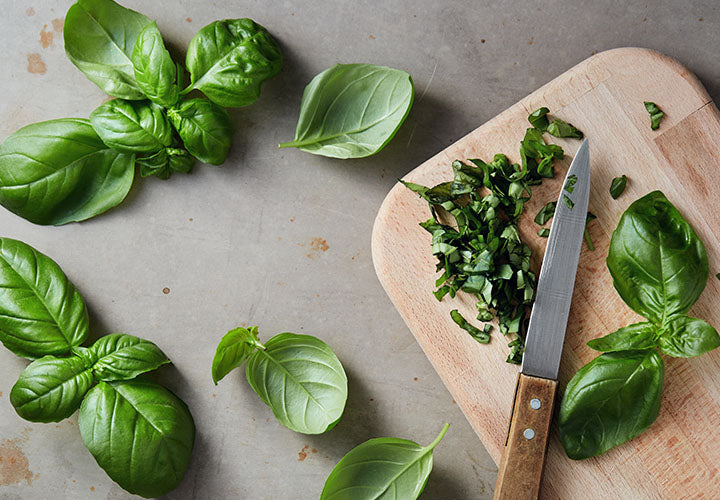
- Infusing Oils and Vinegars: Create flavorful infusions by combining fresh basil leaves with olive oil or apple cider vinegar. These infusions can be used as dressings or marinades, adding a vibrant green color and aromatic essence to dishes. They also make delightful homemade gifts for food enthusiasts.
- Summer Beverages: Add torn basil leaves to iced tea, lemonade, or cocktails to enhance the taste profile and provide a refreshing twist. The natural sweetness and herbal notes of basil complement a variety of flavors, making it a versatile ingredient for both alcoholic and non-alcoholic drinks.
- Versatility in the Kitchen: With its ability to complement a wide range of flavors, fresh basil inspires creativity in the kitchen. Whether infusing it into oils and vinegars or incorporating it into beverages, the possibilities are endless. Explore new and exciting ways to enjoy this flavorful herb and let your culinary imagination run wild.
Troubleshooting Common Issues in Hydroponic Basil Growth

- Nutrient Deficiency:
- Symptoms: Stunted growth, yellowing leaves, and poor overall health.
- Action:
- Monitor Nutrient Levels: Regularly test the hydroponic solution using a comprehensive nutrient testing kit.
- Identify Lacking Nutrients: Determine which essential nutrients (e.g., nitrogen, phosphorus, potassium) are deficient.
- Adjust Nutrient Solution: Add the necessary nutrients in appropriate amounts following recommended guidelines.
- Avoid Overfeeding: Prevent overfeeding, as excessive nutrients can harm the plants.
- pH Imbalance:
- Preferred pH Range for Basil: 5.5 to 6.5 (slightly acidic).
- Symptoms of pH Issues:
- High pH (Alkaline): Reduced nutrient absorption, nutrient deficiencies.
- Low pH (Acidic): Similar issues, but different nutrients affected.
- Testing and Adjustment:
- Regular pH Testing: Use a pH meter or paper strips to monitor pH level.
- pH Too High: Lower it by adding a pH-lowering solution or adjusting nutrient mix.
- pH Too Low: Raise it by adding a pH-raising solution.
- Gradual Adjustments: Make small changes and retest to avoid shocking the plants.
Remember these points to maintain healthy basil growth in your hydroponic system! 🌿🌱
Watch video for more information:
FAQ
Why is my hydroponic basil not growing?
There could be several reasons why your hydroponic basil is not growing. It could be due to inadequate lighting, improper nutrient levels, incorrect pH levels, or pests and diseases. Make sure to review the article for troubleshooting tips on each of these issues.
What should I do if my hydroponic basil is wilting?
Wilting in hydroponic basil could be a sign of underwatering or overwatering. Check the moisture level in the growing medium and adjust accordingly. If the issue persists, it could also be a sign of nutrient deficiency or root rot, so consider reviewing the article for guidance on these topics.
How often should I prune my hydroponic basil plants?
Pruning your hydroponic basil plants is essential for optimal growth. Regularly trim off any yellow or damaged leaves, and pinch off the tops of the plants to encourage bushier growth. It is recommended to prune your basil plants every 1-2 weeks.
What can I do to prevent pests and diseases in my hydroponic basil?
To prevent pests and diseases in your hydroponic basil, maintain a clean and sanitized growing environment. Regularly monitor your plants for any signs of pests or diseases and take immediate action if detected. Consider introducing beneficial insects, such as ladybugs or predatory mites, to control pest populations naturally.
How do I know when to harvest my hydroponic basil?
Harvesting your hydroponic basil at the right time is crucial for flavor and yield. Wait until the basil plants have grown to a height of 6-8 inches and have developed at least six sets of leaves. Harvest by cutting just above a leaf node, which will encourage new growth.
What is the best way to store and preserve hydroponic basil?
To store and preserve hydroponic basil, gently wash the leaves, dry them thoroughly, and place them in airtight containers or freezer bags. Store them in the refrigerator for up to a week or freeze them for longer-term storage. Alternatively, you can also dry the basil leaves by hanging them upside down in a well-ventilated area.
What are some creative uses for fresh basil?
Fresh basil can be used in a variety of delicious recipes. It adds flavor to salads, pasta dishes, sandwiches, and even cocktails. You can also make pesto, infused oils, or freeze basil leaves in ice cube trays to add to soups or stews. Get creative and experiment with different culinary uses for fresh basil!

Studied Agricultural Engineering-Plant Protection at University of California, Davis.
Head of Content writing team at Southelmontehydroponics.com

